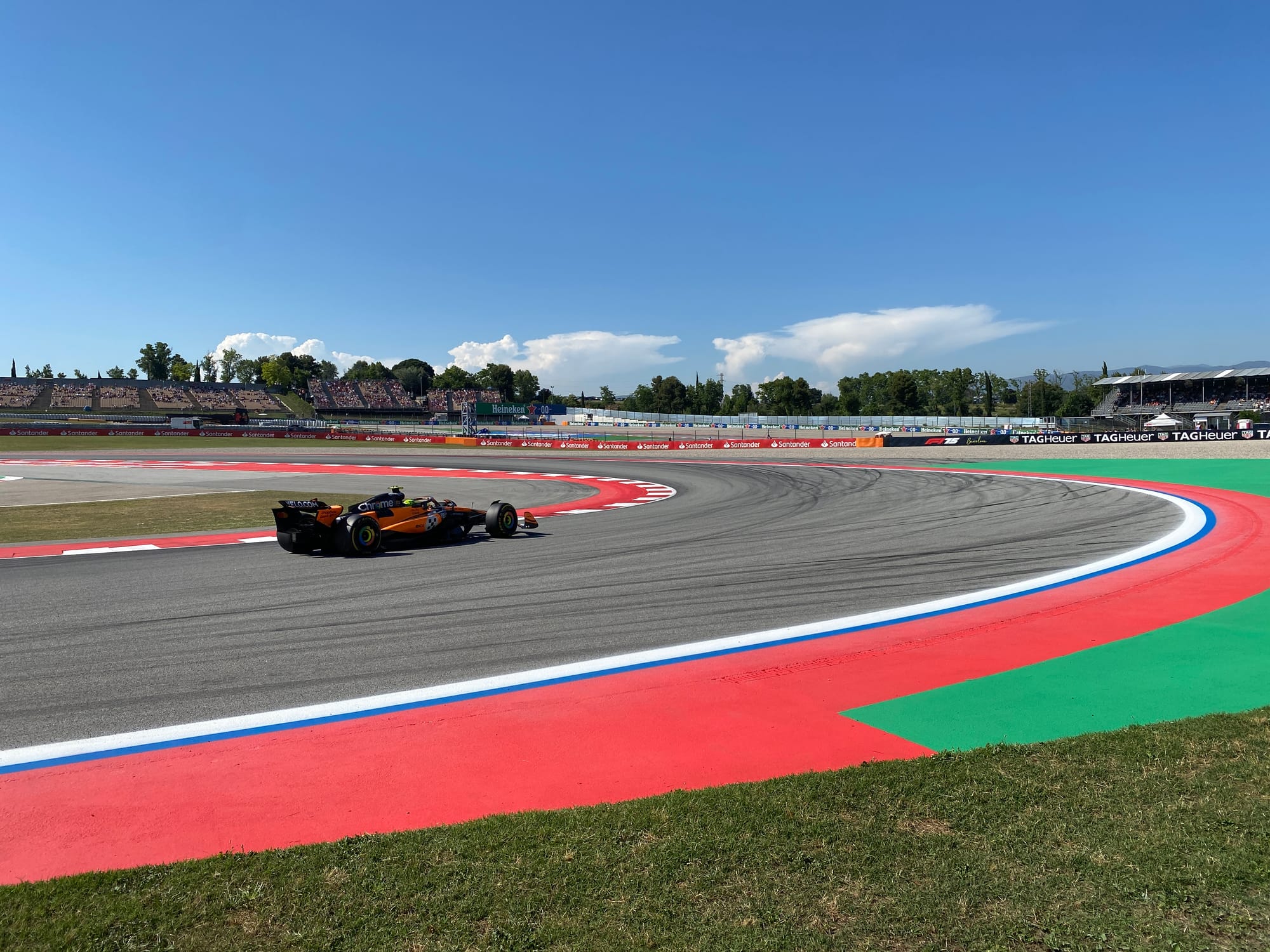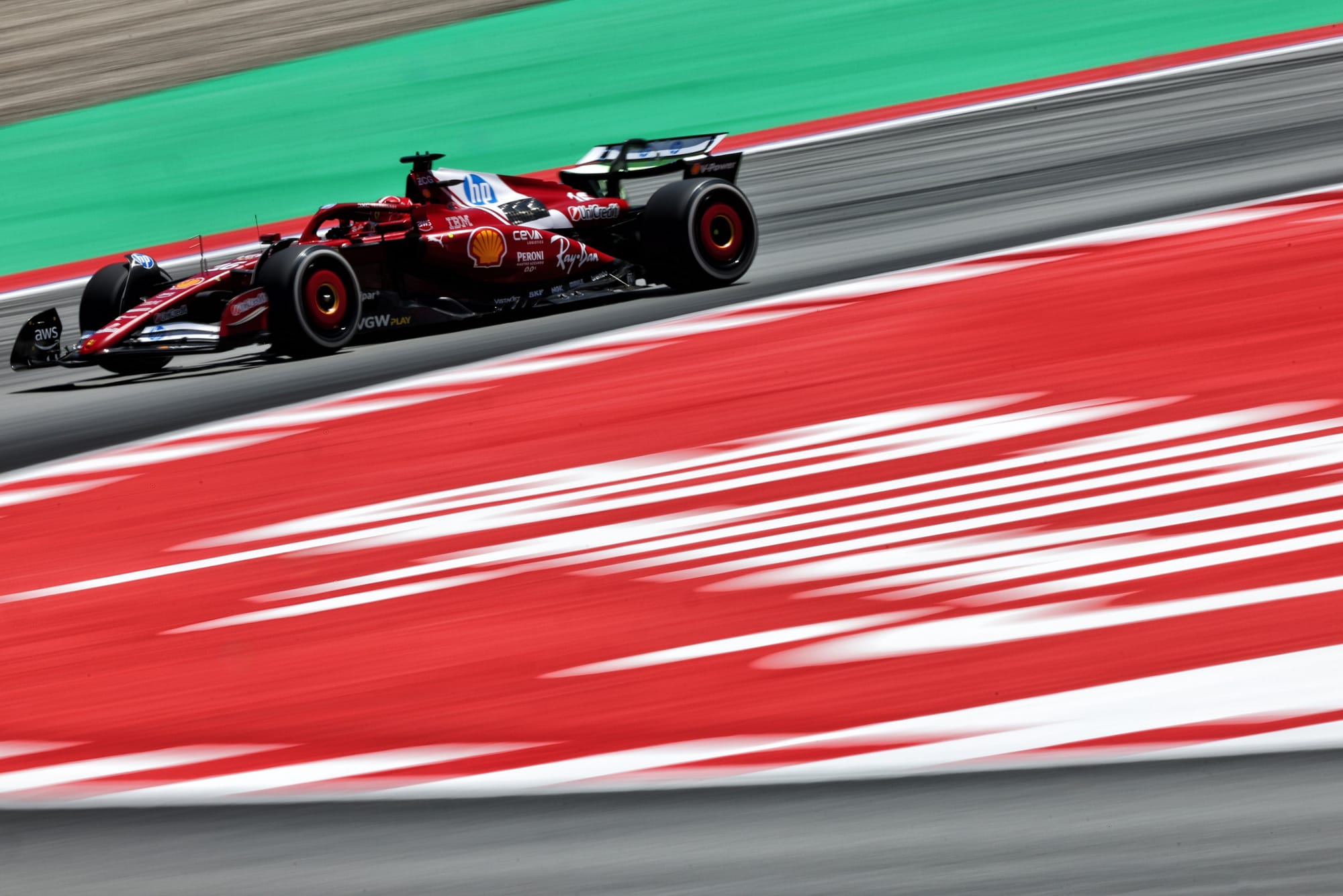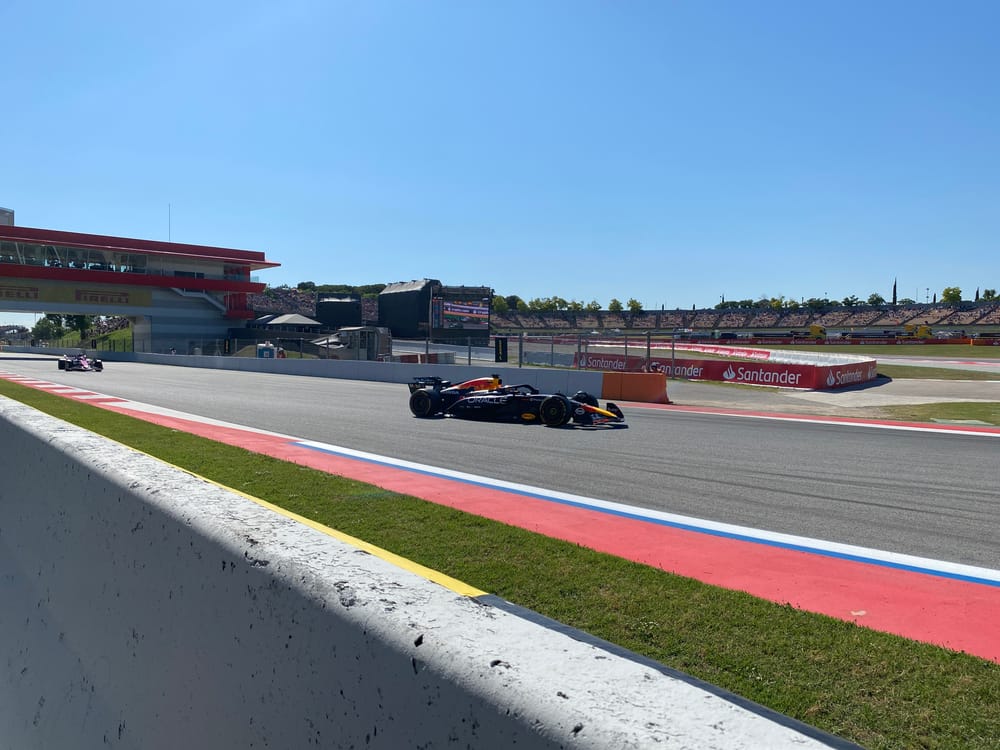Barcelona has a deserved reputation as a demanding aerodynamic test of a Formula 1 car, hence its reputation as an ideal test track.
With intrigue surrounding the impact of the front-wing flexibility technical directive, Friday practice for the Spanish Grand Prix is the ideal opportunity to watch trackside to see first-hand if there was any evidence of the impact of the change.
For FP1, I head to the outside of Turn 3. That's long been a regular vantage point at this track, offering a partial view of Turn 1, then sight of the cars as they go through the Turn 2 left-hander into the long, sweeping right turn of Turn 3.
For FP2, the destination is the Turn 10 left-hander, a hairpin that leads into an uphill section where it takes a few minutes to adapt to the impossible speed these cars can carry into the corner while still making it round.

Early on in FP1, it's noticeable how many drivers are having moments in Turn 2 - more than you'd expect even allowing for the green track.
With Turn 2 almost forming the second part of an ‘S' combined with Turn 1, then leading immediately into Turn 3, it's usually a sign of a good car when it is possible to be smooth with the car planted through this section with its changes of direction.
But most had moments through here, which inevitably leads to the question about whether this was a result of balance problems caused by the reduction in permitted wing flexibility. Later in FP1, these are still happening – certainly with more frequency than in corresponding sessions in previous years. It's also worth noting that with one car for each team forced to run the steel skid blocks as part of the FIA's trial, there is a key unseen difference.
Of the frontrunners, the McLaren is the strongest here in terms of how the car looks on track. Lando Norris stands out as he has several moments in Turn 2, a couple of times sliding far wider than any driver would like. When it works, he looks stronger than team-mate Oscar Piastri, but Piastri is the more consistent.
Max Verstappen, too, has his struggles through here with evidence of the disconnected balance of the Red Bull. As ever, he's on top of them and the moments are minor and don't cost momentum. With team-mate Yuki Tsunoda, the disconnect is magnified.
It's a similar story at Turn 10, where Verstappen appears to be slightly more conservative on the brakes than the McLarens but dances on the tightrope superbly, getting the car rotated and onto the power effectively. The mid-corner moments are subtle, but less so for Tsunoda – who is braking later and under-rotated. The RB21 isn't at its best there, but Verstappen nails it even though the car won't allow him to carry the speed as, say, Norris can with his committed approach to the corner. The net result is the impression of a Red Bull that can, in the hands of Verstappen, be a threat.
Charles Leclerc is the most spectacular driver of the day, albeit not necessarily the most effective. A big rear-end slide at Turn 2 in the morning represents the biggest moment anyone has there, although generally both he and Ferrari team-mate Lewis Hamilton look relatively comfortable through there without looking like the equal of McLaren or Red Bull.

But at Turn 10 there's a contrast. Leclerc attacks the corner spectacularly on his quick lap, with a moment mid corner that he somehow turns into a credible exit. That's in keeping with much of what's an attacking lap. Hamilton appears to work more within the car's limitations, with his more conservative approach here working reasonably well.
As for the Mercedes, while the pace isn't anything special it has phases where it at least looks responsive and consistent. After an untidy start in FP1, things improve - though at Turn 10, in George Russell's hands at least, it's probably the least eye-catching of the frontrunners with its tyre temperature troubles making the car tricky.
In the closely-congested midfield pack, the Alpine and Racing Bulls appear to be the cars of choice with little to choose between them either from Turn 3 or Turn 10.

While Aston Martin's Fernando Alonso is the fastest of the group in FP2, his spectacular run through Turn 10 indicates how hard he's hustling the car. He's late on the brakes, carries in speed and that costs him later in the corner as he has to work hard to complete the rotation with reduced minimum speed, leading to a stuttering exit. Team-mate Lance Stroll takes a more conventional approach, carrying the speed through the corner. It's tidier, but no quicker.
The notable absentee is Williams. Watching from Turn 3, there's nothing particularly problematic – and Victor Martins, considering his inexperience, looks impressive when compared to Carlos Sainz (most of his time loss is later in the lap).
But at Turn 10, when on a quick lap the car's weakness is exposed. Both Sainz and Alex Albon can't quite hook the car into the corner as much as they'd like, meaning the throttle is fed in with the car slightly under-rotated and leading to a more hesitant exit.
Haas wasn't at its best either with Ollie Bearman's FP2 disrupted thanks to a spin at Turn 3. While the Haas at times looked strong - in particular carrying speed into Turn 10 early in the session while still able to get the car rotated - overall neither driver was able to catch the eye on their quickest laps.
At Sauber, Nico Hulkenberg seems able to attack Turn 10 more on the brakes than team-mate Gabriel Bortoleto in a car that generally seems to be reasonably well balanced but, as ever, a little light on downforce. With a good lap, it appears that it can again be a Q2 car.



